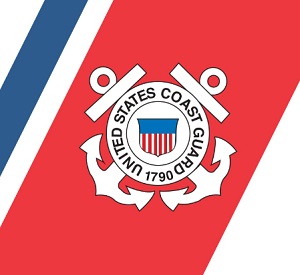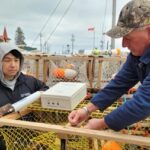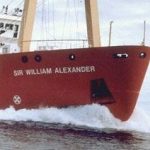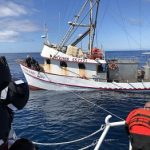Daily Archives: December 1, 2024
Coast Guard and good Samaritans search for people on board fishing boat that capsized in seas off Southeast Alaska
 The U.S. Coast Guard and good Samaritans, including a state ferry, are searching Sunday for multiple missing people who were on board a commercial fishing boat that reportedly capsized in cold seas in Icy Strait, southwest of Juneau. Five people were thought to be on board based on “reports from individuals familiar with those aboard the vessel,” the Coast Guard said in a statement. Searchers have found cold-water safety gear and other emergency items but no people yet in the search area, according to the Coast Guard. The Coast Guard reported heavy snow and strong winds up to 45-60 mph in the area Sunday, with 6-foot seas. Around 12:10 a.m. Sunday, crew on board the roughly 50-foot-long vessel Wind Walker reported that “they were overturning” in a mayday call that was received by Coast Guard Sector Southeast Alaska watchstanders, the Coast Guard said. more, >>CLICK TO READ<< 15:33
The U.S. Coast Guard and good Samaritans, including a state ferry, are searching Sunday for multiple missing people who were on board a commercial fishing boat that reportedly capsized in cold seas in Icy Strait, southwest of Juneau. Five people were thought to be on board based on “reports from individuals familiar with those aboard the vessel,” the Coast Guard said in a statement. Searchers have found cold-water safety gear and other emergency items but no people yet in the search area, according to the Coast Guard. The Coast Guard reported heavy snow and strong winds up to 45-60 mph in the area Sunday, with 6-foot seas. Around 12:10 a.m. Sunday, crew on board the roughly 50-foot-long vessel Wind Walker reported that “they were overturning” in a mayday call that was received by Coast Guard Sector Southeast Alaska watchstanders, the Coast Guard said. more, >>CLICK TO READ<< 15:33
How Jake Anderson Lost the F/V Saga on ‘Deadliest Catch’
 As proven in the 20 seasons of Deadliest Catch, nothing is for certain. Things can change on a whim, and security is something not to take for granted. Fan-favorite Jake Anderson has learned this the hard way. After putting everything into the F/V Saga, Jake suddenly lost control of the boat he part-owned when he was served a repossession note. With the timing coinciding with the Red King Crab fishery reopening and a derby-style race underway, Jake was essentially lost at sea. Captain Jake Anderson has been a staple on the Discovery Channel series Deadliest Catch since 2007. When he started in the industry nearly 18 years ago, he began working as a greenhorn on the F/V Northwestern. Through his time in the industry, Jake has tried his hand at every job in his career, ranging from deckhand, deck boss, engineer, captain, and vessel owner. With his focus mainly on the operations side at the helm of F/V Saga, Jake’s world was turned upside down. more, >>CLICK TO READ<< 12:18
As proven in the 20 seasons of Deadliest Catch, nothing is for certain. Things can change on a whim, and security is something not to take for granted. Fan-favorite Jake Anderson has learned this the hard way. After putting everything into the F/V Saga, Jake suddenly lost control of the boat he part-owned when he was served a repossession note. With the timing coinciding with the Red King Crab fishery reopening and a derby-style race underway, Jake was essentially lost at sea. Captain Jake Anderson has been a staple on the Discovery Channel series Deadliest Catch since 2007. When he started in the industry nearly 18 years ago, he began working as a greenhorn on the F/V Northwestern. Through his time in the industry, Jake has tried his hand at every job in his career, ranging from deckhand, deck boss, engineer, captain, and vessel owner. With his focus mainly on the operations side at the helm of F/V Saga, Jake’s world was turned upside down. more, >>CLICK TO READ<< 12:18
$5.4 million to further innovative research and outreach in support of the lobster industry and fishing communities
 The American lobster fishery and American lobster fishery in the Gulf of Maine, Georges Bank and southern New England continue to face uncertainties due to environmental and socio-economic changes. Such challenges underscore the need for continued research and engagement to not only understand the fishery’s current state but also prepare for its future state. Since 2019, Sea Grant’s American Lobster Initiative has addressed critical knowledge gaps about the American lobster and its fishery facing a dynamic and changing environment. The Initiative supports a regional extension program in the Northeast and a national research competition. Fifteen emerging research projects were selected in 2023 and 2024 for $4.6 million in federal funding by the NOAA National Sea Grant College Program. The projects were chosen through a competitive process, including review by subject matter experts, and require at least a 50-percent match in non-federal funds. more, >>CLICK TO READ<< 10:03
The American lobster fishery and American lobster fishery in the Gulf of Maine, Georges Bank and southern New England continue to face uncertainties due to environmental and socio-economic changes. Such challenges underscore the need for continued research and engagement to not only understand the fishery’s current state but also prepare for its future state. Since 2019, Sea Grant’s American Lobster Initiative has addressed critical knowledge gaps about the American lobster and its fishery facing a dynamic and changing environment. The Initiative supports a regional extension program in the Northeast and a national research competition. Fifteen emerging research projects were selected in 2023 and 2024 for $4.6 million in federal funding by the NOAA National Sea Grant College Program. The projects were chosen through a competitive process, including review by subject matter experts, and require at least a 50-percent match in non-federal funds. more, >>CLICK TO READ<< 10:03
Toxic Blade Time Bomb
 We have documented the threats of industrial wind turbines to both soil and water in their pre and post-construction phases, not to mention birds, bats, insects, and humans. But not enough has been said about the serious environmental threat of “blade shedding.” This is erosion that occurs primarily on the edge of turbine blades as they are exposed to the elements. And it is far from benign: “Microplastic shedding from turbine blades, known as Leading Edge Erosion, is a great concern to manufacturers who are forced to repair the damage that occurs after only a couple of years. The particles eroded from blades include epoxy which is 40% Bisphenol-A (BPA), a frequently banned endocrine disruptor and neurotoxin. Academic research has shown the potential for 137 pounds of epoxy microparticles to be shed per turbine per year.” Mark Twichell, Citizens Against Wind Turbines in Lake Erie, October 29, 2022, The Buffalo News more, >>CLICK TO READ<< 08:32
We have documented the threats of industrial wind turbines to both soil and water in their pre and post-construction phases, not to mention birds, bats, insects, and humans. But not enough has been said about the serious environmental threat of “blade shedding.” This is erosion that occurs primarily on the edge of turbine blades as they are exposed to the elements. And it is far from benign: “Microplastic shedding from turbine blades, known as Leading Edge Erosion, is a great concern to manufacturers who are forced to repair the damage that occurs after only a couple of years. The particles eroded from blades include epoxy which is 40% Bisphenol-A (BPA), a frequently banned endocrine disruptor and neurotoxin. Academic research has shown the potential for 137 pounds of epoxy microparticles to be shed per turbine per year.” Mark Twichell, Citizens Against Wind Turbines in Lake Erie, October 29, 2022, The Buffalo News more, >>CLICK TO READ<< 08:32
Rubber barons: Weirdly fashionable and always functional rubber boots
 Winter is the time of year when conversations turn to footwear with good traction on icy surfaces. Regardless of the season, however, rubber boots are popular with Southeasterners year-round. XtraTufs are now an emblem of belonging and identify the wearer as a bona fide outdoor Alaskan. The distinctive sole pattern, patented in 1972 by William Gottlieb of Davenport, Iowa, is believed to provide excellent stability on slick surfaces such as fishing boat decks, harbor docks and icy trails. Occasionally the boots are worn with the upper portion folded over to expose the liner and presumably make the wearer’s legs cooler. That interior exposure helped rubber boots become a fashion statement as well as essential footwear due to recent embellishment with designer linings. No longer just for working and playing, they have long been the preferred footwear for locals regardless of the weather. Occasionally they are worn in formal settings, even by brides on their wedding day. Photos, more, >>CLICK TO READ<< 06:40
Winter is the time of year when conversations turn to footwear with good traction on icy surfaces. Regardless of the season, however, rubber boots are popular with Southeasterners year-round. XtraTufs are now an emblem of belonging and identify the wearer as a bona fide outdoor Alaskan. The distinctive sole pattern, patented in 1972 by William Gottlieb of Davenport, Iowa, is believed to provide excellent stability on slick surfaces such as fishing boat decks, harbor docks and icy trails. Occasionally the boots are worn with the upper portion folded over to expose the liner and presumably make the wearer’s legs cooler. That interior exposure helped rubber boots become a fashion statement as well as essential footwear due to recent embellishment with designer linings. No longer just for working and playing, they have long been the preferred footwear for locals regardless of the weather. Occasionally they are worn in formal settings, even by brides on their wedding day. Photos, more, >>CLICK TO READ<< 06:40












































